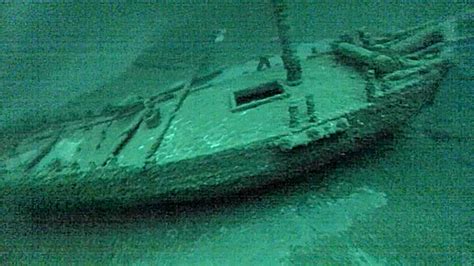
Cruise giants Royal Caribbean and Carnival Corporation are locked in a high-stakes competition to develop exclusive island destinations in the Bahamas, aiming to enhance passenger experiences and secure a competitive edge in the rapidly growing cruise industry. These ambitious projects represent significant investments and signal a new phase of expansion, potentially reshaping the landscape of Caribbean tourism.
Royal Caribbean and Carnival Corporation are strategically investing hundreds of millions of dollars to create private paradises in the Bahamas, each designed to offer unique and immersive experiences for their cruise passengers. This move comes as the cruise industry experiences a post-pandemic resurgence, with both companies reporting strong bookings and increased demand for cruise vacations. The investments in private destinations are seen as a way to differentiate their offerings, enhance customer satisfaction, and ultimately drive revenue growth. Royal Caribbean’s Perfect Day at CocoCay has already proven to be a successful model, prompting Carnival to ramp up its efforts with its own ambitious island development plans.
Royal Caribbean’s existing Perfect Day at CocoCay has set a high bar for private island experiences, featuring a water park with record-breaking slides, pristine beaches, and exclusive cabanas. “Perfect Day at CocoCay revolutionized the private island experience and has become a major selling point for Royal Caribbean,” said travel industry analyst, Sarah Miller. Building on this success, Royal Caribbean is exploring further expansions and enhancements to its island portfolio.
Carnival Corporation, not to be outdone, is developing its own large-scale projects aimed at creating equally compelling destinations. While specific details about Carnival’s plans are still emerging, the company has emphasized its commitment to delivering unique and immersive experiences that cater to a wide range of passenger preferences. These projects are expected to include a variety of attractions, dining options, and entertainment venues, all designed to provide a memorable and seamless vacation experience.
The development of these private islands is not without its challenges. Environmental concerns, logistical complexities, and the need to balance tourism with the needs of local communities are all factors that both companies must carefully consider. Both Royal Caribbean and Carnival have stated their commitment to sustainable development practices and working closely with local stakeholders to ensure that their projects benefit the Bahamas as a whole.
A Deeper Dive into Royal Caribbean’s Strategy
Royal Caribbean’s Perfect Day at CocoCay, located in the Berry Islands district of the Bahamas, serves as a blueprint for its approach to private island development. The island underwent a $250 million transformation, reopening in 2019 with a wide array of attractions designed to appeal to diverse demographics. Key features include:
- Daredevil’s Peak: The tallest waterslide in North America, offering thrill-seekers an adrenaline-pumping experience.
- Oasis Lagoon: The largest freshwater pool in the Caribbean, providing a relaxing and family-friendly environment.
- Coco Beach Club: An exclusive area with overwater cabanas, offering a luxurious and private escape.
- Up, Up and Away: A helium balloon ride that provides panoramic views of the island and surrounding waters.
- Chill Island: A tranquil area with pristine beaches and crystal-clear waters, perfect for relaxation and water sports.
The success of Perfect Day at CocoCay can be attributed to several factors, including its strategic location, diverse range of attractions, and seamless integration with Royal Caribbean’s cruise itineraries. The island has become a major selling point for the cruise line, attracting passengers of all ages and generating significant revenue.
Royal Caribbean is constantly evaluating opportunities to enhance and expand its private island offerings. This includes exploring new technologies, adding innovative attractions, and further personalizing the guest experience. The company is also committed to sustainable tourism practices, minimizing its environmental impact and supporting local communities.
Carnival Corporation’s Response: A Focus on Immersive Experiences
While Carnival Corporation has not yet revealed the full details of its private island development plans, the company has made it clear that it intends to create destinations that are equally compelling and unique. Carnival’s strategy is focused on delivering immersive experiences that cater to a wide range of passenger preferences. This includes:
- Diverse Activities: Offering a variety of activities and attractions, ranging from water sports and adventure tours to cultural experiences and culinary delights.
- Themed Zones: Creating distinct themed zones within the island, each offering a unique atmosphere and set of experiences.
- Local Integration: Partnering with local businesses and communities to showcase Bahamian culture and support the local economy.
- Sustainable Practices: Implementing sustainable development practices to minimize environmental impact and protect the natural beauty of the Bahamas.
- Seamless Integration: Ensuring a seamless and hassle-free experience for cruise passengers, with convenient transportation, clear signage, and attentive service.
Carnival’s approach is also characterized by a strong emphasis on value. The company aims to provide high-quality experiences at competitive prices, making its cruises accessible to a wide range of travelers.
The Economic Impact on the Bahamas
The development of private islands by Royal Caribbean and Carnival Corporation has significant economic implications for the Bahamas. These projects create jobs, generate revenue, and stimulate economic growth. However, it’s crucial to consider both the positive and negative impacts and to ensure that these developments benefit the local community.
Positive Impacts:
- Job Creation: The construction and operation of private islands create a wide range of job opportunities for Bahamians, including construction workers, hospitality staff, tour guides, and entertainers.
- Revenue Generation: Cruise passengers who visit private islands spend money on souvenirs, food, drinks, and activities, generating revenue for local businesses and the Bahamian government.
- Infrastructure Development: The development of private islands often leads to improvements in infrastructure, such as roads, utilities, and transportation systems, which can benefit the entire community.
- Tourism Promotion: Private islands can help to promote the Bahamas as a tourist destination, attracting more visitors and generating additional revenue for the country.
Potential Negative Impacts:
- Environmental Concerns: The construction and operation of private islands can have a negative impact on the environment, including damage to coral reefs, pollution of water resources, and disruption of marine ecosystems.
- Over-reliance on Tourism: An over-reliance on tourism can make the Bahamian economy vulnerable to fluctuations in the global economy and changes in consumer preferences.
- Displacement of Local Communities: The development of private islands can displace local communities and disrupt traditional ways of life.
- Unequal Distribution of Benefits: The economic benefits of private island development may not be evenly distributed, with some communities benefiting more than others.
To maximize the positive impacts and minimize the negative impacts, it’s essential for Royal Caribbean, Carnival Corporation, and the Bahamian government to work together to ensure that these projects are developed in a sustainable and responsible manner. This includes:
- Environmental Impact Assessments: Conducting thorough environmental impact assessments to identify and mitigate potential environmental risks.
- Sustainable Development Practices: Implementing sustainable development practices to minimize environmental impact and protect natural resources.
- Community Engagement: Engaging with local communities to ensure that their voices are heard and their needs are addressed.
- Fair Labor Practices: Providing fair wages and working conditions for Bahamian employees.
- Revenue Sharing: Sharing revenue with the Bahamian government to support public services and infrastructure development.
The Competitive Landscape
The competition between Royal Caribbean and Carnival Corporation to develop private island destinations reflects a broader trend in the cruise industry. As cruise lines seek to differentiate themselves and enhance the passenger experience, they are increasingly investing in exclusive amenities and attractions, both on and off their ships.
Other cruise lines, such as Norwegian Cruise Line and Disney Cruise Line, also operate private islands or exclusive beach clubs in the Bahamas and the Caribbean. These destinations offer a range of amenities and activities, from water parks and beaches to shopping and dining.
The competition among cruise lines to attract passengers is intense, and the development of private island destinations is just one aspect of this competitive landscape. Cruise lines are also investing in new ships, innovative technologies, and enhanced onboard experiences to attract and retain customers.
The Future of Cruise Tourism in the Bahamas
The future of cruise tourism in the Bahamas is likely to be shaped by several factors, including:
- Economic Growth: Continued economic growth in the United States and other key markets will drive demand for cruise vacations.
- Technological Innovation: Technological innovations, such as mobile apps and wearable devices, will enhance the passenger experience and streamline operations.
- Sustainable Tourism: Growing awareness of environmental issues will drive demand for sustainable tourism practices.
- Regulatory Environment: Changes in the regulatory environment, such as new environmental regulations or tax policies, could impact the cruise industry.
- Geopolitical Events: Geopolitical events, such as natural disasters or political instability, could disrupt cruise itineraries and impact tourism.
Despite these uncertainties, the cruise industry is expected to continue to grow in the coming years, and the Bahamas is likely to remain a popular destination for cruise passengers. The development of private island destinations by Royal Caribbean and Carnival Corporation is a testament to the enduring appeal of the Bahamas as a cruise destination.
The Environmental Considerations
The development of private islands and increased cruise ship traffic raises significant environmental concerns that must be addressed to ensure the long-term sustainability of the Bahamian environment. Some of the key concerns include:
- Coral Reef Damage: Cruise ships and their passengers can damage coral reefs through direct contact, pollution, and the introduction of invasive species.
- Water Pollution: Cruise ships generate wastewater, sewage, and other pollutants that can contaminate coastal waters and harm marine life.
- Air Pollution: Cruise ships emit air pollutants, such as sulfur dioxide and particulate matter, which can contribute to air pollution and climate change.
- Waste Management: Cruise ships generate large quantities of waste, which can overwhelm local waste management systems and contribute to pollution.
- Habitat Destruction: The construction of private islands and other tourism infrastructure can destroy or disrupt important habitats, such as mangroves, seagrass beds, and wetlands.
To mitigate these environmental impacts, it’s essential for cruise lines, the Bahamian government, and other stakeholders to implement sustainable practices, such as:
- Wastewater Treatment: Investing in advanced wastewater treatment technologies to reduce pollution from cruise ships.
- Air Emission Controls: Implementing air emission controls to reduce air pollution from cruise ships.
- Waste Reduction and Recycling: Reducing waste generation and increasing recycling rates on cruise ships.
- Coral Reef Protection: Implementing measures to protect coral reefs from damage, such as mooring buoys and dive site management plans.
- Habitat Restoration: Restoring damaged habitats, such as mangroves and seagrass beds.
- Environmental Monitoring: Conducting regular environmental monitoring to assess the impact of cruise tourism on the Bahamian environment.
The Local Perspective
The development of private islands and the growth of cruise tourism in the Bahamas have a profound impact on local communities. It’s important to consider the perspectives of Bahamian residents and to ensure that these developments benefit the local population.
Some of the key concerns of local communities include:
- Economic Opportunities: Ensuring that Bahamians have access to economic opportunities in the tourism sector, such as jobs, business ownership, and training programs.
- Cultural Preservation: Protecting Bahamian culture and heritage from the negative impacts of tourism.
- Environmental Protection: Protecting the natural environment and ensuring that tourism is sustainable.
- Infrastructure Development: Investing in infrastructure, such as roads, schools, and healthcare facilities, to support the growing population.
- Community Engagement: Engaging with local communities in the planning and development of tourism projects.
To address these concerns, it’s essential for cruise lines, the Bahamian government, and other stakeholders to work together to create a tourism industry that is sustainable, equitable, and beneficial to all. This includes:
- Community Benefits Agreements: Negotiating community benefits agreements with local communities to ensure that they receive a fair share of the economic benefits of tourism.
- Local Hiring and Procurement: Prioritizing local hiring and procurement to support Bahamian businesses and workers.
- Cultural Tourism Initiatives: Promoting cultural tourism initiatives that showcase Bahamian culture and heritage.
- Environmental Education Programs: Implementing environmental education programs to raise awareness of environmental issues and promote sustainable practices.
- Community Development Projects: Investing in community development projects that address local needs and improve the quality of life for Bahamians.
Conclusion: Balancing Paradise with Responsibility
The race between Royal Caribbean and Carnival Corporation to create the ultimate private island experience in the Bahamas highlights the evolving dynamics of the cruise industry and its impact on Caribbean tourism. While these developments promise enhanced vacation experiences for passengers and significant economic opportunities for the Bahamas, they also raise important questions about environmental sustainability, community engagement, and the long-term impact on the local culture and economy. A collaborative approach involving cruise lines, the Bahamian government, and local communities is essential to ensure that these “paradises” are developed responsibly and contribute to a sustainable future for the Bahamas. The delicate balance between economic growth and environmental preservation will ultimately determine whether these island showdowns truly result in “paradise found” for all stakeholders.
Frequently Asked Questions (FAQ)
1. What are Royal Caribbean and Carnival Corporation doing in the Bahamas?
Royal Caribbean and Carnival Corporation are investing heavily in developing exclusive private island destinations in the Bahamas for their cruise passengers. Royal Caribbean already operates Perfect Day at CocoCay, while Carnival is developing its own large-scale project.
2. Why are these cruise lines investing in private islands?
The cruise lines are investing in private islands to enhance the passenger experience, differentiate their offerings from competitors, and secure a competitive edge in the rapidly growing cruise industry. These islands provide controlled environments where the cruise lines can offer unique attractions and activities.
3. What are some of the attractions at Royal Caribbean’s Perfect Day at CocoCay?
Perfect Day at CocoCay features Daredevil’s Peak (the tallest waterslide in North America), Oasis Lagoon (the largest freshwater pool in the Caribbean), Coco Beach Club (with overwater cabanas), Up, Up and Away (a helium balloon ride), and Chill Island (for relaxation and water sports).
4. What are the potential environmental impacts of these private island developments?
Potential environmental impacts include damage to coral reefs, water pollution from wastewater and sewage, air pollution from cruise ship emissions, waste management challenges, and habitat destruction from construction.
5. How are these developments impacting the local communities in the Bahamas?
The developments have the potential to create jobs and generate revenue for local businesses. However, there are also concerns about environmental impacts, displacement of local communities, and the unequal distribution of benefits. It is essential for cruise lines and the Bahamian government to work together to ensure sustainable and responsible development that benefits the local population.









